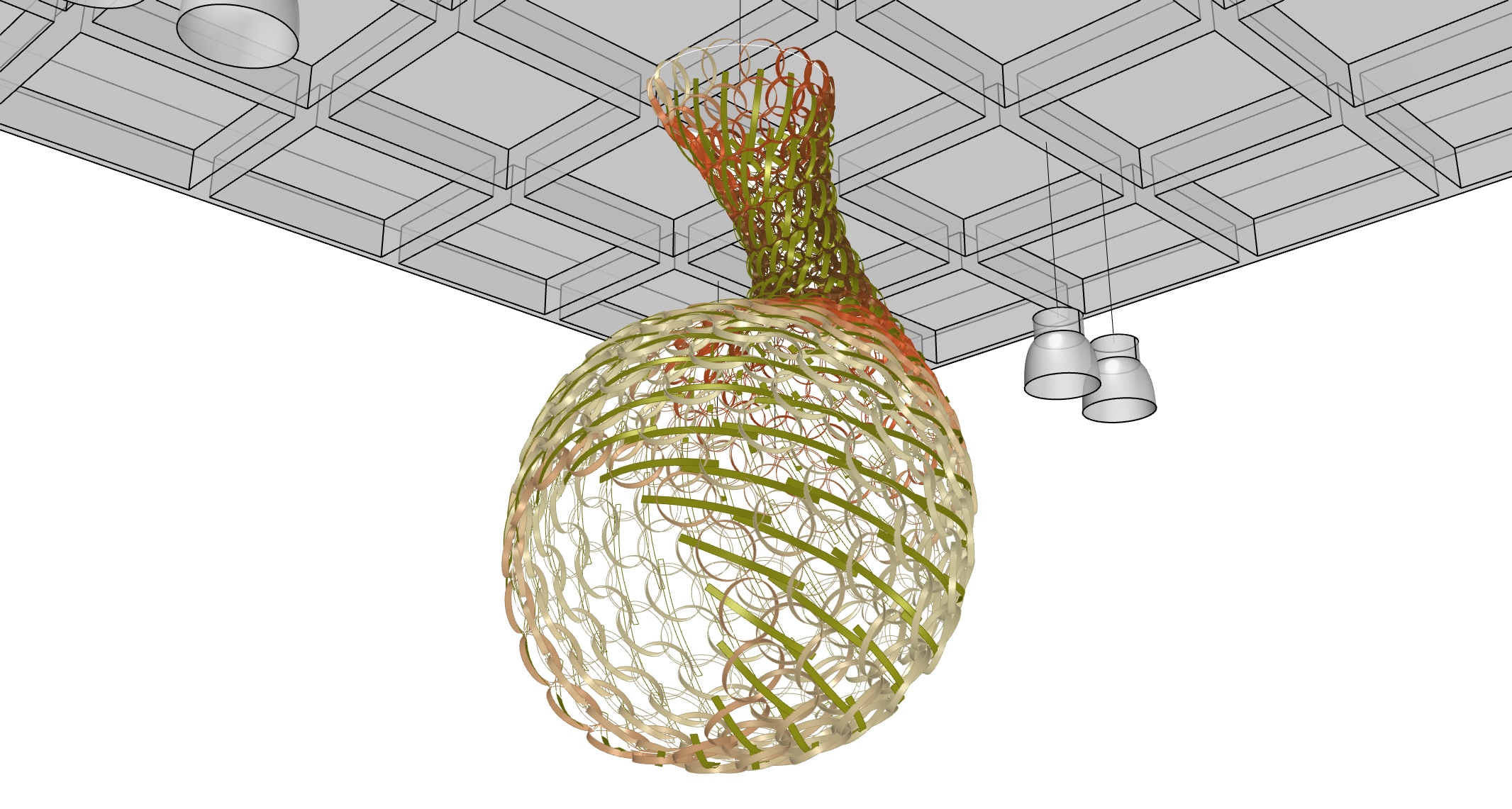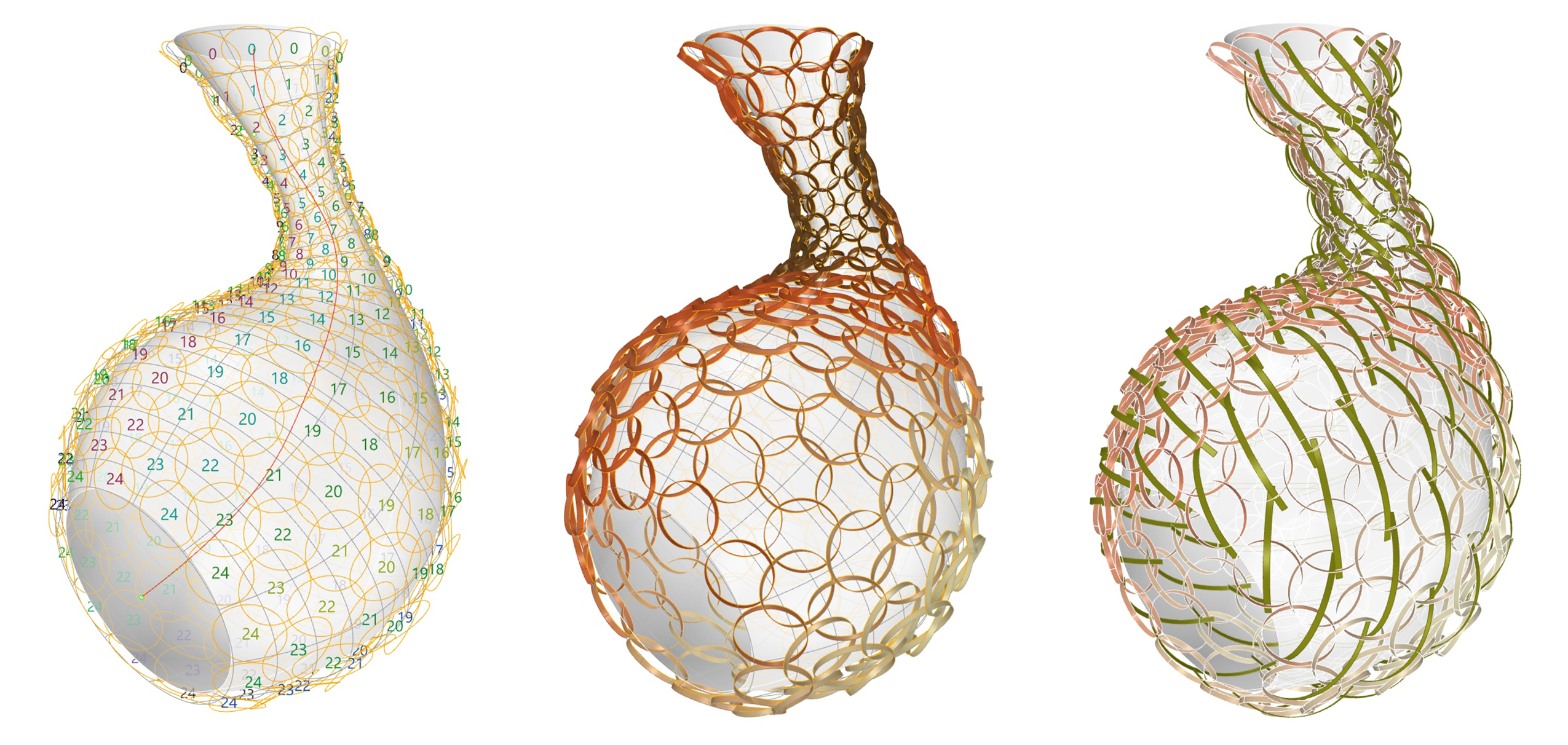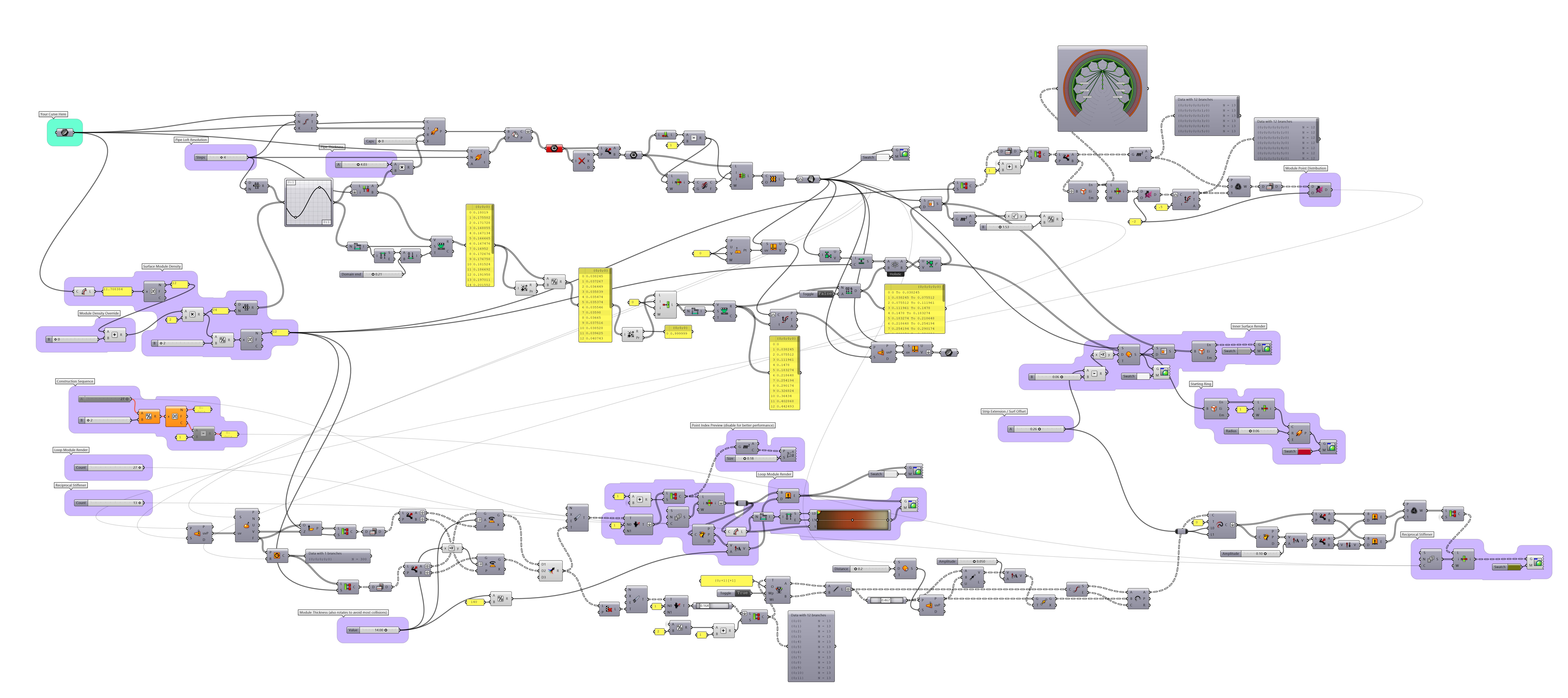
Bio-Inspired Weaver Sculpture
What
Where
When
For
Where
When
For
Pendant Sculpture
Design Library, UCB
2020
Natural Fibers Architecture Course
Design Library, UCB
2020
Natural Fibers Architecture Course
Our class studied the structures of African and European social weaver birds as precedents for a pendant sculpture that would be suspended within the atrium space of the Environmental Design Library. The sculpture would be composed of plant-based 3D printed material. Our class was broken down into 5 groups to tackle different aspects of the project, but I was assigned sole responsibility for the computational aspect of the project. This position provided myself with an enormous amount of leverage over the design of the scultpure, as it became almost entirely digitally-based after our physical prototyping phase was swiftly interrupted by the pandemic.
Considering the limitations of a print bed, it was determined that the sculpture would be composed of modules in order to scale it to a desireable size. The tectonic system between these modules was inspired by weaver bird nests and Native America basket weaving. We translated the structural behavior of the grass, a developable surface, being threaded and knotted around other blades. The strands of grass that compose these weaver nests are not only knotted together, but they are pressed against eachother in a way that creates a reciprocal structure. These pieces are charged with potential energy as they are bent out of plane, but they become fixed in position with this energy as they make contact adjacent pieces, acting to stiffen the structure. The position and integrity of one discrete piece is directly dependent on all surrounding pieces as they become suspended in equillbrium. This principle inspired the use of secondary strips which are slipped between the looped modules on a diagonal. These strips function to flex the looped modules out to their limit as the strips attempt to become flat again. A diagonal pattern was determined necessary because exclusively aligning these compression strips on the vertical or horizontal axis would not result in a global extension of the loops, but rather a loose structure that does not find its full extent and shape. The result is a reciprocal arrangement that is composed of discrete pieces linked together with knots and the compression caused by the potential energy of reciprocal members. The parametric methods that this structure was designed with allow the density of these modules to be adjusted until the largest module in the array is small enough to be printed flat on a print bed.
The construction and installation of the structure was cancelled due to the social distancing requirements of the early pandemic.
Considering the limitations of a print bed, it was determined that the sculpture would be composed of modules in order to scale it to a desireable size. The tectonic system between these modules was inspired by weaver bird nests and Native America basket weaving. We translated the structural behavior of the grass, a developable surface, being threaded and knotted around other blades. The strands of grass that compose these weaver nests are not only knotted together, but they are pressed against eachother in a way that creates a reciprocal structure. These pieces are charged with potential energy as they are bent out of plane, but they become fixed in position with this energy as they make contact adjacent pieces, acting to stiffen the structure. The position and integrity of one discrete piece is directly dependent on all surrounding pieces as they become suspended in equillbrium. This principle inspired the use of secondary strips which are slipped between the looped modules on a diagonal. These strips function to flex the looped modules out to their limit as the strips attempt to become flat again. A diagonal pattern was determined necessary because exclusively aligning these compression strips on the vertical or horizontal axis would not result in a global extension of the loops, but rather a loose structure that does not find its full extent and shape. The result is a reciprocal arrangement that is composed of discrete pieces linked together with knots and the compression caused by the potential energy of reciprocal members. The parametric methods that this structure was designed with allow the density of these modules to be adjusted until the largest module in the array is small enough to be printed flat on a print bed.
The construction and installation of the structure was cancelled due to the social distancing requirements of the early pandemic.






